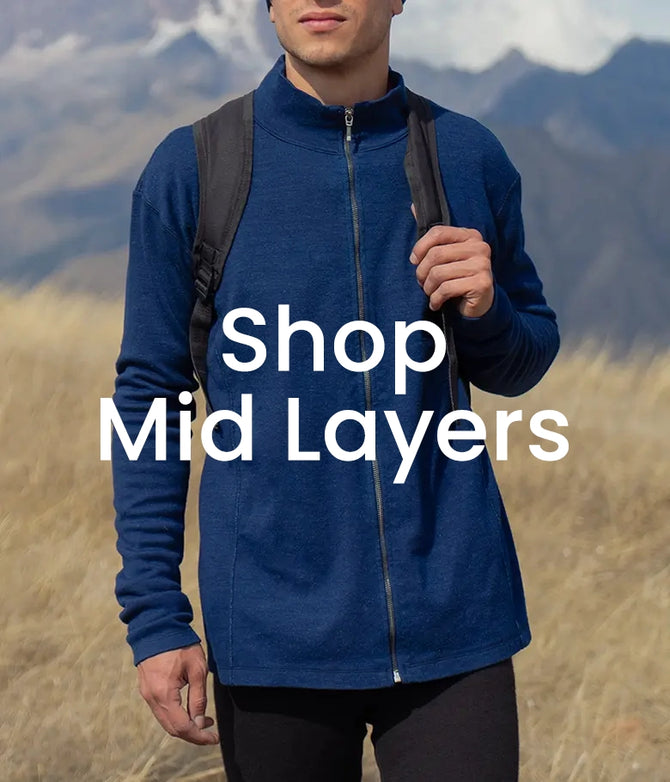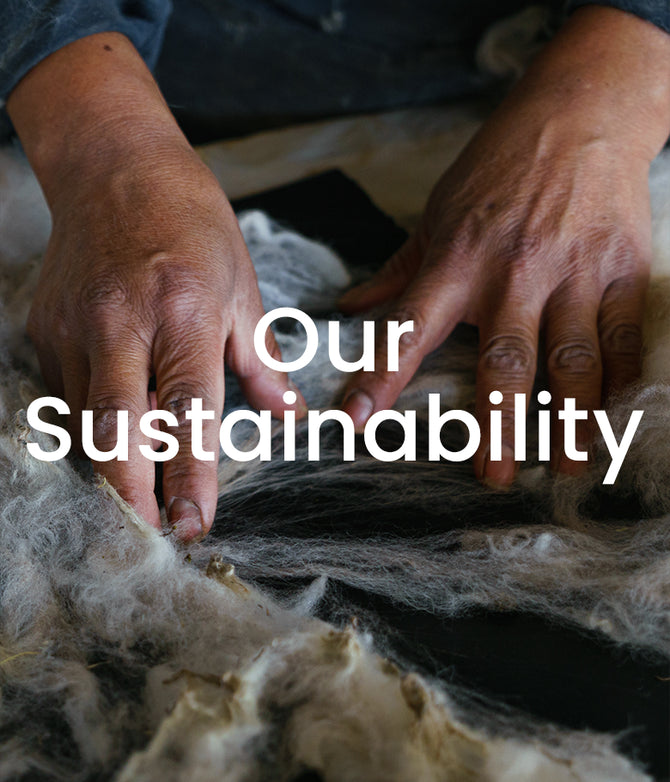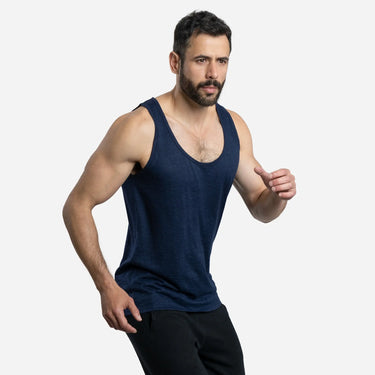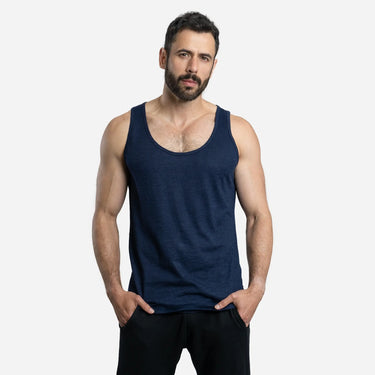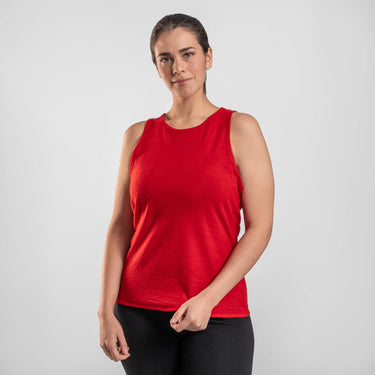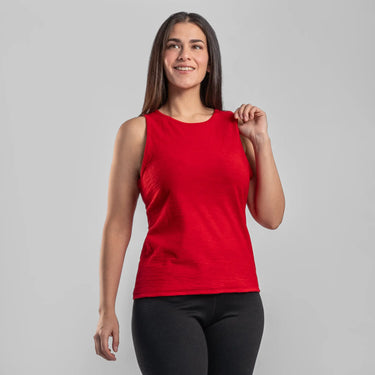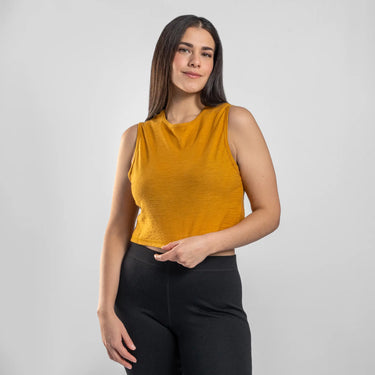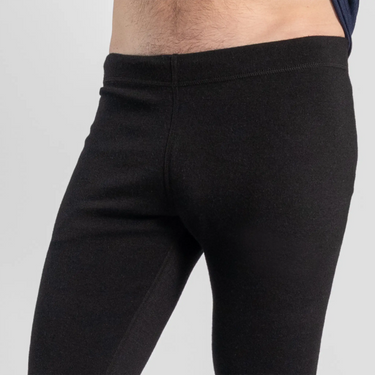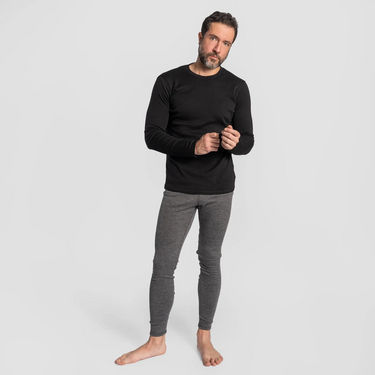Everything You Need To Know Before Your Next Ski Trip
Picture by Visitalmaty
Published Nov 22, 2021 | Updated Feb 17, 2025
Reading time: 5 minutes
1. Say Goodbye to Single-Use Plastics
Single-use plastics are a huge environmental problem, but small tweaks in your daily habits can make a big difference:
- Bring reusable bags: Make or buy groceries and produce bags to use instead of plastic ones. Keep them by the door or in your car so you never forget them.
- Ditch bottled water: Invest in a reusable water bottle [1]. If tap water isn’t safe, boil or filter it instead.
- Carry a reusable coffee cup: Even “eco-friendly” disposable cups create waste if not disposed of properly.
- Pack a zero-waste kit: Include bamboo or metal cutlery, a reusable straw, and a container for takeout. It might take practice, but soon it’ll feel natural.
2. Use Less Water and Energy
Every drop counts, and every watt matters. Here are a few small changes to reduce your footprint:
- Shorten your showers: A quick shower saves both water and energy. Bonus: it’s better for your skin too! [2]
- Turn off the lights: Unplug appliances and switch off lights when you’re not using them [3].
- Hang clothes to dry: Whenever possible, skip the dryer and hang your clothes. It’s gentler on fabrics and the planet.
- Flush smarter: If your toilet has an eco-flush option, use it. No eco-flush? Place a filled bottle in the tank to reduce water per flush.
At Arms of Andes we make our gear from 100% Royal Alpaca Wool of 18-18.5 microns.
3. Make Eco-Conscious Food Choices
Food is one of the easiest ways to live more sustainably:
- Buy local and seasonal: This reduces transportation emissions and supports local farmers [4].
- Cook from scratch: Homemade meals usually come with less packaging and waste.
- Be mindful about meat: Choose ethically raised options, like free-range chicken or grass-fed beef, and support sustainable farming practices. Exploring plant-based meals occasionally can also make a difference [5].
- Opt for sustainable groceries: Shop at packaging-free or bulk stores. No access? Buy in bulk at your regular store to minimize waste.
4. Rethink Your Transportation Habits
How you get around affects your carbon footprint. Start small:
- Walk or bike more: Even once a week can make a difference.
- Use public transport: Replace car trips with bus or train rides when possible [9].
- Carpool: Sharing rides with colleagues or friends reduces emissions.
- Fly less: For shorter trips, consider buses or trains. Offset your carbon emissions for long flights.
5. Choose Sustainable Fashion
The fashion industry is one of the largest polluters, but your wardrobe can make a difference:
- Avoid fast fashion: Look for quality over quantity. Cheaper often means corners were cut in ethics and sustainability.
- Buy second hand: Thrift stores and online resale platforms are great for finding unique, affordable items.
- Support eco-conscious brands: Do your research and choose brands that prioritize sustainability, like Arms of Andes, which uses 100% alpaca wool and natural dyes [6].
- Host clothing swaps: A fun way to give new life to unused items in your closet [7].

6. Upgrade Your Hygiene and Cleaning Habits
Small changes to your personal care and cleaning routines can have a big impact:
- Switch to bamboo* toothbrushes: Look for ones with compostable bristles and packaging.
- Choose steel razors: A durable, waste-free alternative to disposable razors.
- Use natural options: Biodegradable shampoos, soaps, and detergents are better for the planet.
- Use menstrual cups and fabric sanitary towels: They take a little getting used to, but you won’t go back when you do!
- Clean with vinegar and baking soda: These simple ingredients work wonders around the house and are free of harmful chemicals [8].
* When choosing products made from bamboo, try to ensure the bamboo comes from sustainable sources.
7. Embrace Nature and DIY Solutions
Spending time outdoors and trying DIY solutions are both fun and sustainable:
- Grow your own vegetables: Even a small herb garden on a windowsill can make a difference.
- Start composting: Turn food scraps into nutrient-rich compost for your garden. No garden? Check if your city collects food waste.
- Connect with nature: Spending time outside reduces stress and reminds us why protecting the planet matters.
- Join community initiatives: Participate in clean-ups or tree-planting events.
8. Be Mindful About Waste
Rethinking how you handle waste is key to sustainable living:
- Reuse before you recycle: Find new uses for things before throwing them away.
- Donate or swap: Let someone else enjoy what you no longer need.
- Avoid expedited shipping: One-day deliveries often mean more vehicles on the road, increasing emissions.
Sustainable living starts with REDUCING waste, REPAIRING and/or REUSING broken/unused items, before RECYCLING or, when possible, COMPOSTING them.
Why Small Steps Matter
You might think, “Will my tiny changes really help?” The answer is yes. If everyone made just one or two of these adjustments, the collective impact would be enormous. And remember, you don’t have to do everything at once. Pick a couple of these tips to start with, and add more as you go. Before you know it, living sustainably will feel like second nature.
So, are you ready to make 2024 your most sustainable year yet? Small steps today can lead to a greener tomorrow. Let’s get started—one habit at a time!

At Arms of Andes we make our gear from 100% Royal Alpaca Wool of 18-18.5 microns.
Planning your next ski adventure? Whether you’re a seasoned skier or hitting the slopes for the first time, preparation is key to making the most of your trip. From choosing the right gear to staying warm in freezing temperatures, this guide covers everything you need to know before your next ski trip.
Let’s get you slope-ready with tips that blend performance, comfort, and sustainability.
1. What to Wear for Skiing: Mastering the Art of Layering
When skiing, your clothing isn’t just about style—it’s your first line of defense against the cold. The secret? Layering smartly. Here’s how to do it right:
Base Layer: Your Second Skin
Think of the base layer as your climate control system. It should wick away moisture while keeping you warm. Alpaca wool is the ultimate choice because it’s:
- Naturally thermoregulating: Keeps you warm without overheating [1].
- Moisture-wicking: Stays dry even after hours of activity [1].
- Hypoallergenic: Perfect for sensitive skin [2,3].
For full coverage, opt for long-sleeve tops, thermal leggings, and warm alpaca wool socks. Bonus tip: Pack extra pairs of socks—they’re your best friends after a long day in the snow.

Mid Layer: Your Insulation Hero
The mid layer traps body heat while allowing sweat to escape. You can choose from fleece, synthetic fibers, or—better yet—natural alpaca wool sweaters. Why alpaca?
- Lightweight yet warm: Provides insulation without the bulk [4,5].
- Breathable: Prevents that clammy feeling after intense runs [5].
- Environmentally responsible: Sourced sustainably, reducing your environmental footprint [2,5].
Outer Layer: Your Shield Against the Elements
The outer layer protects you from wind, snow, and moisture [6]. Look for:
- Waterproof ski jackets and pants with sealed seams.
- Windproof features to block chilly gusts.
- Ventilation zippers for temperature control.
Don’t forget the essentials: gloves, a beanie, and a neck warmer. These small items make a big difference when battling harsh weather.


6. Upgrade Your Hygiene and Cleaning Habits
Small changes to your personal care and cleaning routines can have a big impact:
- Switch to bamboo* toothbrushes: Look for ones with compostable bristles and packaging.
- Choose steel razors: A durable, waste-free alternative to disposable razors.
- Use natural options: Biodegradable shampoos, soaps, and detergents are better for the planet.
- Use menstrual cups and fabric sanitary towels: They take a little getting used to, but you won’t go back when you do!
- Clean with vinegar and baking soda: These simple ingredients work wonders around the house and are free of harmful chemicals [8].
* When choosing products made from bamboo, try to ensure the bamboo comes from sustainable sources.
7. Embrace Nature and DIY Solutions
Spending time outdoors and trying DIY solutions are both fun and sustainable:
- Grow your own vegetables: Even a small herb garden on a windowsill can make a difference.
- Start composting: Turn food scraps into nutrient-rich compost for your garden. No garden? Check if your city collects food waste.
- Connect with nature: Spending time outside reduces stress and reminds us why protecting the planet matters.
- Join community initiatives: Participate in clean-ups or tree-planting events.
At Arms of Andes we make our gear from 100% Royal Alpaca Wool of 18-18.5 microns.


2. Prepare Your Body: Get Fit for the Slopes
Skiing isn’t just a leisure activity—it’s a full-body workout. Preparing physically will help you enjoy longer days on the slopes without burning out [7,8].
Key Focus Areas:
- Leg strength: Squats, lunges, and step-ups to handle those intense downhill runs.
- Core stability: Planks and Russian twists improve balance.
- Cardiovascular endurance: Jogging, cycling, or HIIT workouts to boost stamina.
You don’t need to train like an athlete, but a few weeks of pre-ski conditioning can make a huge difference.
3. Organize Your Ski Gear Like a Pro
If it’s your first ski trip, renting equipment is a smart move. Here’s what you’ll need:
Essential Ski Gear:
- Ski Boots: Should feel snug but not painfully tight. Wear thick socks when trying them on.
- Skis: Trust rental shop experts to match you with the right pair based on your skill level.
- Poles: Proper height ensures better control. When planted vertically, your elbow should form a 90° angle.
- Helmet: Safety first! Always wear one, even if you’re an experienced skier.
- Goggles: Protect your eyes from snow glare and UV rays.
Pro Tip:
Pack a small repair kit with duct tape, zip ties, and a multi-tool. You’ll thank yourself if something breaks mid-run.


At Arms of Andes we make our gear from 100% Royal Alpaca Wool of 18-18.5 microns.
Men's Alpaca Wool Jacket
420 Midweight Full-Zip

For snowboarders, skiers, and winter hikers, weight matters. Every gram counts when you're climbing, carrying gear, or navigating the slopes. Alpaca wool’s unique insulation properties allow for lightweight warmth, meaning you stay protected without unnecessary bulk.
Five Reasons to Choose Alpaca Wool for Snow Sports
Alpaca wool is the ultimate base and mid layer material for tackling the demands of skiing and snowboarding. Its unique properties make it an exceptional choice for base and mid layers, ensuring comfort and performance on the slopes.
1. Exceptional Warmth
Alpaca wool fibers feature semi-hollow cores, providing incredible insulation. Combined with their natural crimp (waviness), these fibers trap heat efficiently,
2. Breathable and Moisture-Wicking
One of alpaca wool’s standout qualities is its ability to wick moisture away from your skin while remaining highly breathable. This means you stay dry and comfortable, even during intense physical activity. Alpaca wool base layers, such as leggings and shirts, excel in keeping you warm and sweat-free.
3. Temperature Regulation
Alpaca wool’s unique ability to balance warmth and breathability helps regulate your body temperature. Whether you're racing downhill or waiting for the ski lift, alpaca wool keeps you warm in the cold and prevents overheating during activity.
4. Lightweight and Flexible
Thanks to its excellent insulating properties, alpaca wool keeps you warm without adding bulk. This lightweight quality ensures freedom of movement—crucial for maintaining balance and agility on the slopes.
At Arms of Andes we make our gear from 100% Royal Alpaca Wool of 18-18.5 microns.
Men's Alpaca Wool Jacket
420 Midweight Full-Zip

Relatedcontent
Bamboo:
A fast-growing plant often used for making sustainable products like toothbrushes and cutlery.
Biodegradable:
Materials that can break down naturally without harming the environment.
Bulk stores:
Shops where you can buy products in large quantities, often with minimal packaging.
Carbon footprint:
The total amount of greenhouse gases produced directly or indirectly by human activities.
Composting:
A process where organic waste decomposes into nutrient-rich material for gardening.
Ethically raised:
Livestock or poultry that is raised in humane and environmentally responsible ways.
Fast fashion:
Cheap, mass-produced clothing often linked to environmental and ethical issues.
Natural dyes:
Coloring substances derived from plants, animals, or minerals, used to color fabrics sustainably.
4. Protect Yourself from the Elements
Skiing isn’t just cold—it’s also sun-intense due to snow’s reflective properties. Don’t underestimate the power of the sun at high altitudes.
Must-Have Protection:
- High-SPF Sunscreen: Apply even on cloudy days.
- UV-Protective Lip Balm: Prevent painful chapped lips.
- Polarized Goggles: Reduce glare and protect your eyes from UV damage.
Hydration is key, too. Cold weather can dehydrate you faster than you think. Carry an insulated water bottle to keep fluids from freezing.
5. The Ultimate Ski Trip Checklist
Make packing stress-free with this sustainable skier’s checklist:
- Base Layers: Long-sleeve top, thermal leggings, alpaca wool socks.
- Mid Layer: Insulating alpaca wool sweater or fleece.
- Outer Layer: Waterproof ski jacket and pants.
- Accessories: Gloves, beanie, neck warmer, helmet, goggles.
- Gear: Skis, poles, boots (or rent on-site).
- Protection: Sunscreen, UV lip balm, hydration bottle.
- Extras: Repair kit, energy snacks, and a small first aid kit.
6. Ski Sustainably with Arms of Andes
At Arms of Andes, we believe adventure shouldn’t come at the planet’s expense. That’s why we create high-performance outdoor gear from 100% alpaca wool, a natural fiber that’s:
- Thermoregulating: Keeps you warm in the cold and cool when it’s warm [1].
- Lightweight and breathable: Perfect for active winter sports [4,5].
- Sustainably sourced: Reducing environmental impact with minimal water usage and sustainability-focused production practices [2,5].
Choosing alpaca wool means you’re not just investing in performance—you’re supporting a cleaner planet with every layer you wear.


Glossarykeywords
Alpaca Wool:
A natural fiber sourced from alpacas, known for its lightweight warmth, breathability, and thermoregulating properties, making it ideal for outdoor winter gear.
Base Layer:
The first layer of clothing worn closest to the skin, designed to wick moisture, regulate body temperature, and keep the wearer dry during cold-weather activities.
Breathable:
A fabric’s ability to allow moisture vapor to escape, helping to prevent sweat buildup and maintain comfort during physical activities.
Cardiovascular Endurance:
The ability of the heart, lungs, and muscles to sustain physical activity over time, essential for maintaining stamina while skiing.
Hypoallergenic:
Refers to materials that are unlikely to cause allergic reactions, such as alpaca wool, which is gentle on sensitive skin.
Insulation:
The ability of a material or clothing layer to retain body heat, helping to keep the wearer warm in cold conditions.
Layering:
A technique of wearing multiple clothing layers to manage body temperature effectively, typically consisting of base, mid, and outer layers.
Moisture-Wicking:
The process by which fabric pulls sweat away from the skin to the fabric’s surface, where it can evaporate, keeping the wearer dry.
Outer Layer:
The protective, weather-resistant layer designed to shield the body from wind, snow, and moisture while allowing internal moisture to escape.
Sustainably Sourced:
Refers to materials obtained in a way that minimizes environmental impact, ensuring ethical and eco-conscious production practices.
Thermoregulating:
The ability of a material to maintain a stable body temperature by adjusting to external weather conditions, keeping the wearer warm or cool as needed.
Waterproof:
Describes materials or fabrics that are completely resistant to water penetration, essential for protecting against snow and wet conditions while skiing.
At Arms of Andes we use the finest Royal Alpaca Wool sourced in the Peruvian Andes. The Andean alpacas naturally developed over thousands of years in harsh conditions in high altitudes, creating the perfect fiber for outdoor gear that helps you stay protected in all conditions. Discover our outdoor apparel.

In the textile industry, companies that produce garments made entirely from Merino wool typically use fibers that are 17.5 microns or finer to minimize any itchiness or roughness, [4] ensuring comfort for their customers. A study conducted by the Division of Dermatology at the University of Louisville in 2019 evaluated the effects of wearing these garments on individuals with skin sensitivities, such as atopic dermatitis or eczema. In the study, 25 participants wore only Merino wool garments of 17.5 microns for six weeks and cotton garments of 21 microns for six weeks more, while another group of 25 followed the reverse order. Participants reported significant changes when switching from cotton to Merino wool, with those who started in Merino wool experiencing a decrease in their eczema during the first weeks. [4]
| Properties | Royal Alpaca Wool | Cashmere | Merino Wool |
|---|---|---|---|
| Weight | Lightest | Light | Heavier |
| Fiber Structure | Semi-Hollow | Solid | Solid |
| Thermal Capacity | 5 x Warmer | 3 x Warmer | Warm |
| Water Retention | Absorbs 10% of weight | Shrinks in water | Absorbs 10%
of weight |
| UV Protection | Yes | Yes | Yes |
| Fiber Scales | Smoothest | Softest | Prickly |
| Microns (average) | 17.5 | 14 | 18 |
| Tensile Strength | Highest | Weak | High |
| Odor Resistance | Yes | Yes | Yes |
| Wrinkle Resistance | Yes | Yes | Yes |
| Hypoallergenic (Lanolin free) | Yes | Yes | No |
The Final Verdict: And the Winner Is...
After a comprehensive analysis of alpaca, merino, and cashmere, it's clear that cashmere, while undeniably luxurious, lacks the durability required for outdoor garments. However, it excels as a high-end fiber for special occasions and elegant attire.
In the head-to-head battle between alpaca and merino, alpaca emerges as the undisputed champion! Alpaca wool surpasses merino in warmth, lightness, softness, and strength. It's the ultimate choice for those seeking performance, comfort, and sustainability.
Alpaca wool (particularly the royal and baby alpaca fiber grades) is warm, and performs better than merino and other types of sheep's wool. This makes alpaca wool perfect for your outdoor clothing, slipper socks, and even underwear.

Alpaca wool (particularly the royal and baby alpaca fiber grades) is non-itchy, warm, and performs better than merino and other types of sheep's wool. This makes alpaca wool perfect for your outdoor clothing, slipper socks, and even underwear.

Glossarykeywords
Breathability:
The fabric's capacity to allow air and moisture to pass through, preventing dampness and discomfort.
GSM (Grams per Square Meter):
A measurement unit indicating the density and weight of fabric; the higher the GSM, the thicker and warmer the material.
Insulation:
The ability of a fabric to retain body heat and prevent heat loss in cold conditions.
Lightweight:
A characteristic of garments that makes them light and easy to move in without adding bulk.
Mid Layer:
The insulating layer that traps heat while allowing flexibility and breathability.
Moisture-Wicking:
The ability of a fabric, like alpaca wool, to absorb and evaporate sweat quickly, keeping the skin dry.
Outer Shell:
The protective outer layer that shields against wind, snow, and rain.
Temperature Regulation:
The ability of a material to help maintain a stable body temperature, preventing overheating or excessive cooling.
References:
[1] Li, Y., Holcombe, B. V., & Apcar, F. (1992). Moisture buffering behavior of hygroscopic fabric during wear. Textile research journal, 62(11), 619-627.
[2] Moulton, L. (2024). The Emergence of the Peruvian Alpaca Industry in American Markets.
[3] Karthik, T., Rathinamoorthy, R., & Ganesan, P. (2015). Sustainable luxury natural fibers—production, properties, and prospects. Handbook of Sustainable Luxury Textiles and Fashion: Volume 1, 59-98.
[4] Bartl, K., Mogrovejo, P., Dueñas, A., & Quispe, I. (2023). Cradle-to-grave environmental analysis of an alpaca fiber sweater produced in Peru. Science of The Total Environment, 905, 167023.
[5] Doyle, E. K., Preston, J. W., McGregor, B. A., & Hynd, P. I. (2021). The science behind the wool industry. The importance and value of wool production from sheep. Animal Frontiers, 11(2), 15-23.
[6] Czaplicki, Z., Mikołajczyk, Z., & Prążyńska, A. (2018). Analysis of functional properties of knitted fabrics made of alpaca wool and other fibres. Fibres & Textiles in Eastern Europe, 26(3 (129)).
[7] Raschner, C., Platzer, H. P., Patterson, C., Werner, I., Huber, R., & Hildebrandt, C. (2012). The relationship between ACL injuries and physical fitness in young competitive ski racers: a 10-year longitudinal study. British journal of sports medicine, 46(15), 1065-1071.
[8] Hébert-Losier, K., & Holmberg, H. C. (2013). What are the exercise-based injury prevention recommendations for recreational alpine skiing and snowboarding? A systematic review. Sports medicine, 43, 355-366.




